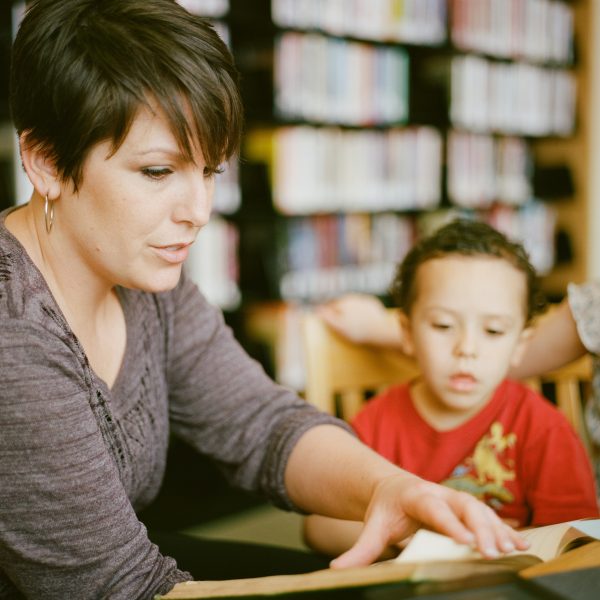Heard about $10 per day childcare – sound too good to be true? You may be right.

Australia is on the brink of major reforms of our early childhood education and care (ECEC) sector, as are many other countries.
John Cherry, Goodstart’s Head of Advocacy, has taken a deep dive into Australia’s ECEC system, comparing it with the Canadian province of Quebec and it’s $10 a day childcare model, which many hold up as an example for Australia to follow.
The results might surprise you.
The Australian Government wants to reform our ECEC system, with the Prime Minister committed to moving towards a universal, quality early learning and care system that better supports all Australian children and families, a reform he has described as being “as important as Medicare” moving forward.
The Government has tasked the Productivity Commission with developing a pathway to a universal ECEC system for Australia, with a final report due in June.
Access to affordable, quality ECEC plays a crucial role in supporting both child development and women’s workforce participation, and many other countries are also engaged in reforming ECEC.
Canadian Government commits to $10 a day of care but quality falling short
The Canadian Government announced a $30 billion National Child Care Plan in 2021 with the objective of reducing parental costs to $10 a day and expanding the provision of high-quality places in the not-for-profit sector.
The Canadian plan builds on the so-called ‘success’ of Quebec where ECEC costs were capped at initially $5 a day (now $10), supporting a significant increase in women’s workforce participation, however many of the new services provided low quality ECEC places which do not support child development.
Some advocates are suggesting that Australia should follow the Canadian $10 a day model, a supply side funding model where the Government decides how many childcare places will be provided, where they will be provided, and at what cost.
While attractive at first glance, such a system would be a major change needing a big new bureaucracy to develop the thousands of funding agreements with individual providers to deliver it, and make complex decisions on how much educators would be paid, how many would be needed, how much should be spent on supporting children, meals, and playground upgrades and how many additional places should be funded each year.
Comparing Quebec and New South Wales ECEC systems
Would the Canadian model work in Australia? Would it be an improvement, or would it mean lower quality or less places for children?
A detailed comparison of the Quebec and New South Wales ECEC system finds some major challenges.
Both States have similar populations but quite different ECEC funding systems and quality regulation standards:
Affordability
- ECEC is generally more affordable for most children in Quebec with 72 per cent of children in places capped at $10 a day, although 28 per cent of children miss out and must attend lower quality privately owned centres with uncapped, higher fees. There is simply not enough lower fee, capped places available.
- ECEC is more affordable in NSW for around 40 per cent of children – mostly from families on low incomes or with more than one child in ECEC – who enjoy out of pocket costs of less than $10 a day now.
Quality
- Quality of ECEC is much higher in NSW than in Quebec, because:
-
- All educators required to be qualified in NSW, but only 50 per cent of Quebec educators need to be qualified
- Generally, more educators per child, particularly for younger children
- Generally higher pay for educators in NSW than in Quebec
- Quebec relies much more heavily on family day care than NSW, where educators need only have a week’s training to care for children
Supply of places
- Supply of ECEC places has grown much faster in NSW than in Quebec, with providers offering an additional 44,750 places in the last five years, compared to 13,903 places in the Government-funded supply system in Quebec
- There is a waiting list of 37,000 children waiting for a fee-capped place in Quebec, and a further 45,000 who will want a place soon
Workforce participation rates
- Female workforce participation rates in Quebec and NSW are identical, although the participation rate for women with young children is higher in Quebec
Government investment
- Federal and State Governments invest substantially more on ECEC in NSW than in Quebec, support higher quality standards and better pay for educators, and more fee relief for low-income families
When considering the future of ECEC in Australia, we can learn from international models, while objectively considering the strengths of the Australian system.
Quebec’s cheaper childcare has delivered improved workforce participation but with lower quality, poorly paid educators and inadequate supply.
The NSW system, while marginally more expensive for around 60 per cent of families than Quebec, delivers higher quality learning for children and more access in terms of growth of new places.
Australia has a lot to be proud of with a solid foundation from which a universal quality ECEC system can be built, a system that is accessible and affordable for all, while making improvements where they are needed.
The full paper can be read here.
Popular

Practice
Provider
Quality
Research
Workforce
New activity booklet supports everyday conversations to keep children safe
2025-07-10 09:00:16
by Fiona Alston

Quality
Practice
Provider
Research
Workforce
Honouring the quiet magic of early childhood
2025-07-11 09:15:00
by Fiona Alston

Quality
Practice
Provider
Workforce
Reclaiming Joy: Why connection, curiosity and care still matter in early childhood education
2025-07-09 10:00:07
by Fiona Alston













